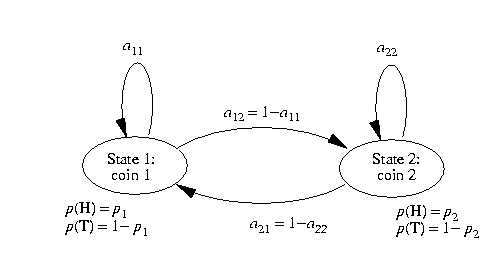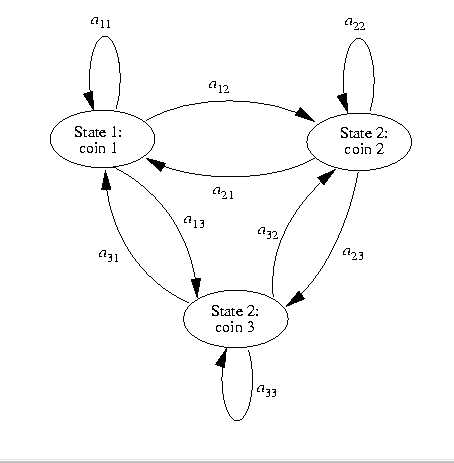Figure 7.4. A Hidden Markov Model, supposing that two coins are being
tossed

(After Rabiner and Juang 1993)
A third possible Markov model for modelling the observed sequence of coin toss outcomes is given in figure 7.4. In this case, there are two states in the model, and each state corresponds to a different, biased coin being tossed. Each state is associated with a probability distribution of heads and tails, and transitions between states are characterised by a separate set of probabilities, the probability of whether the experimenter continues with the same coin or changes to the other coin.
Figure 7.4. A Hidden Markov Model, supposing that two coins are being
tossed

A fourth possibility is given in figure 7.5, in which three coins are hypothesized:
Figure 7.5. A Hidden Markov Model, supposing that three coins are
being tossed
